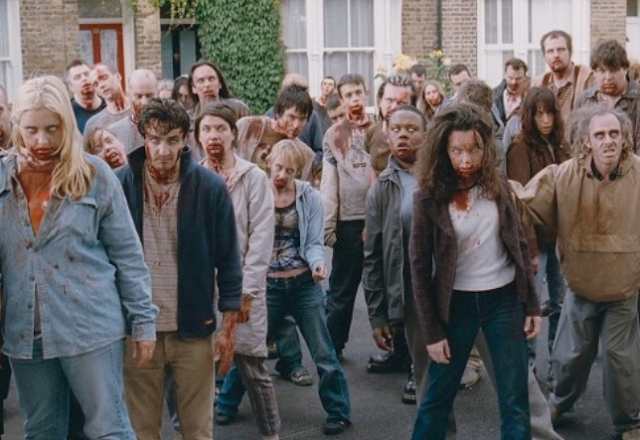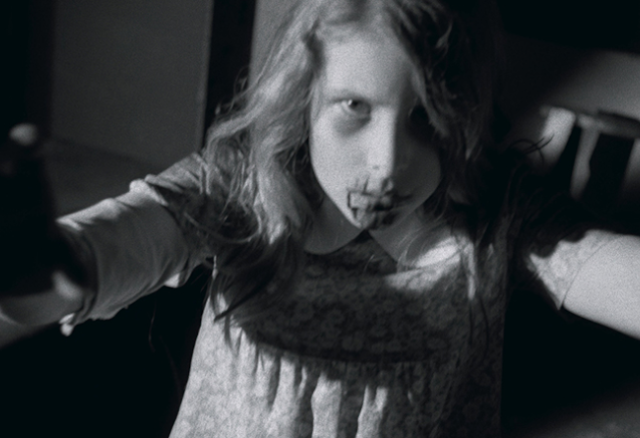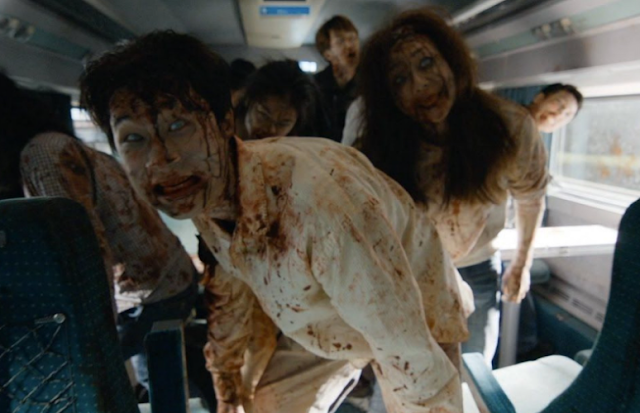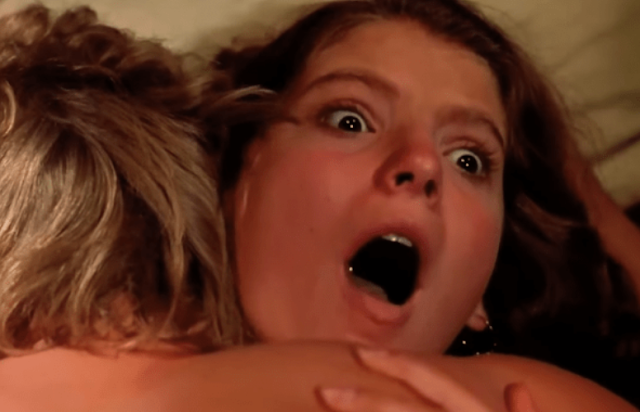Evolution of the zombie movie: from White Zombie to #Alive
By now we’ve all seen so many zombie films it’s hard for new releases not to seem like more of the same. Yet the flesh-eating corpses have evolved a lot since they first terrorised cinemagoers - to the point where a lot of the time they aren’t even dead anymore.
From voodoo curses to toxic gases and demonic possession, there
have been countless different takes on our favourite putrefying cannibals, with
tones ranging wildly from cheerful splatterfests to sombre meditations on the
end of days.
Zombies may have lost some of their bite through
overfamiliarity, yet new innovations in recent years threaten to freshen up the
rotting reanimated corpse of the subgenre.
Early zombies
In these films you can become a zombie by being spiked with
a magic potion (White Zombie, 1932)
or by being cursed (I Walked with a
Zombie, 1943) - both usually administered as an OTT punishment by characters
with a grudge.
While these early zombies were effectively supplanted by the more recognisable post-Romero undead, filmmakers in the 70s and 80s continued to explore zombies’ voodoo roots. Fulci’s Zombi 2 (1979) fuses elements of the earlier voodoo zombies with Romero’s flesh-eating hordes. Meanwhile, bizarre 80s flick Dead & Buried (1981) features zombies under the control of a mad scientist using black magic to reanimate the dead. Even Wes Craven revisited voodoo zombie folklore with The Serpent and the Rainbow (1988).
That said, it’s interesting how far removed modern zombies have become
from their roots. Some historians see tales of zombies in the Caribbean and
Haiti as metaphors for the horrors of slavery and forced labour, and it’s
significant the antagonist of White
Zombie owns a sugar mill run entirely by his zombified enemies. Of course,
zombies would come to stand in as a metaphor for just about anything, as we’ll
soon see.
Romero’s original Living Dead trilogy
George Romero’s Night of the Living Dead (1968) is credited with kickstarting the modern zombie subgenre. Any trace of voodoo is gone, with the cause of the risen corpses never fully explained. Zombies also show their first signs of an appetite for human flesh, which would become their defining characteristic. We follow a ragtag band of bickering survivors in a siege situation - which we’ll see play out countless more times in the coming decades.
Next came Dawn of the
Dead (1978). This film leans harder into what would become the zombie
apocalypse subgenre, picking up three weeks after the events of Night with society already in a state of
disrepair. It introduces more comedic elements, with a more focused satirical
intent on consumerism and retail therapy. It also kickstarted the career of Tom
Savini, who brought a welcome dose of hardcore gore to proceedings.
Day of the Dead (1985) caps off Romero’s original trilogy. It expands on Dawn’s idea that zombies retain something of their former selves, introducing Bub (Sherman Howard) who is partially sentient. More than most other films in the subgenre, the characters delve deep into why the zombies behave the way they do and if their behaviour can be changed. It complicates the depiction of the undead as mindless killing machines, to the extent that by the film’s climax you’re cheering the zombies on as they devour their human persecutors.
Zombie bites in these movies tend to be fatal, but the infectious
nature of zombies carries less weight than it does in later films. Anyone who
dies by any means will return as a zombie in the Romero trilogy, not just those
who are bitten. Some critics see this as a reflection of the nuclear paranoia
of the time, with radiation from space posited in Night as one of the main theories for the zombie phenomenon. Later
films would focus on contemporary preoccupations with viruses and environmental
catastrophe - and the zombie bite would come to be one of the key preoccupations
of the subgenre.
O'Bannon zombies
Though the film perfects the zomcom long before Shaun of the Dead, it also introduces one of the most disturbing interpretations of the zombie. These zombies are essentially drug addicts with an insatiable desire to eat human brains to ease the pain of their rotting bodies. They’re indestructible too - the only way to stop them moving is to burn them, which in turn leads to a form of acid rain and tonnes more zombies.
It also features one of the most unpleasant and drawn-out zombie transformations, with two characters experiencing rigor mortis while still fully self-conscious. Contrary to popular belief, it included the first instance of running zombies, though these sprinting corpses wouldn't catch on completely for another 20 years.
Viral zombies
It’s ironic that 28 Days Later (2002) kickstarted the Noughties zombie cinematic renaissance since its director Danny Boyle refused to categorise it as a zombie film. Many hardcore zombie fans also rejected the label since the infected weren’t actually dead. The film’s sprinting zombies - who would crop up again in Zack Snyder’s Dawn of the Dead remake (2004) and have since pretty much become the default - also annoyed some fans.
Simon Pegg, who of course headlined Romero pastiche Shaun of the Dead (2004), wrote in The Guardian: “The absence of
rage or aggression in slow zombies makes them oddly sympathetic, a detail that
enabled Romero to project depth on to their blankness, to create tragic
anti-heroes. The moment they appear angry or petulant, the second they emit
furious velociraptor screeches (as opposed to the correct mournful moans of
longing), they cease to possess any ambiguity. They are simply mean.”
The reason for the change-up is that Romero and Boyle were aiming at different things. 28 Days tellingly begins with footage of riots and violence. The film is full of paranoia about an increasingly angry and unsettled world, with complete chaos only four weeks on the horizon. We also get the switch up of focus from artificially reanimated corpses to infected blood. The origin of the rage virus in monkeys (the zombie virus in 1992’s Dead Alive also comes from a monkey) mirrors the animal-to-human transmission which led to viral outbreaks such as HIV, ebola and Covid-19.
From this point on many zombies are not dead but infected. From
Rec and Train to Busan to this year’s Yummy
and #Alive - the zombies all
sprint and they’re all infected with a virus rather than being reanimated corpses.
This is likely in part due to the modern fear that a viral pandemic is more
likely to wipe us out than the extra-terrestrial radiation or toxic gases of
previous films. Or maybe it’s a modern demand to pick up the pace with faster
action sequences, along with a desire to see the fast zombies which had begun
to appear in video games on the big screen.
New directions for the subgenre
Fast forward to the present day and there is a growing sense the zombie subgenre is played out, yet filmmakers are still finding ways to keep the walking dead relevent.
There is a current trend to use zombies as a metaphor for
the obliteration of besieged cultures. Ravenous
(2018) sees eerie zombies with an alien culture and religion invade
rural, French-speaking Quebec. A review in local publication The Globe and Mail explained: “Imagine the Quebec homeland being overrun by a hegemonic tribe
with its own culture, and its own irresistible method of converting the
inhabitants into beings such as themselves. That is the worst Québécois
nightmare.”
Similarly, Blood Quantum (2019) takes place in Quebec and imagines a zombie plague where the indigenous population are immune to zombification, a reversal of the devastating impact imported diseases have had on native populations. With the tables turned, they must decide whether to protect their former white oppressors or leave them to the zombies. Meanwhile, Cargo (2017) sees Aboriginal Australians relying on their wits and knowledge of the natural landscape to survive during the zombie apocalypse, while white men and women haplessly succumb to the infection.
21st century films have also picked up on Romero’s interest in the fuzzy line between human and zombie. 2004 French film They Come Back (UK title: The Returned) sees the dead return pretty much as they were in life, aside from cognitive problems which make them sluggish and suggestions they may be up to nefarious schemes.
2016’s The Girl With All The Gifts introduces half-human zombie children capable of speech and rational thought - and grapples with the moral dilemma of if these children can be the subjects of medical experiments to find a cure to the zombie problem. The Cured (2018) and British TV show In The Flesh (2013-2014) find an antidote which returns zombies to their normal human states - and ask if society can accept them after they committed multiple murders against their will.
With appetite visibly waning for the zombie apocalypse, the
time is ripe for another Dawn of the
Dead, 28 Weeks Later or Train to
Busan to give a jolt of life to everyone’s favourite rotting hordes. With
fears of viral outbreaks or environmental collapse at an all-time high, many of us
already feel like we’re staring down the end of the world. And we all know that
any apocalypse can only be improved with the addition of cannibalistic
re-animated corpses.
The introduction of more sympathetic zombies is a symptom of a more widespread trend to endow horror monsters with an inner life. Read more here.
Fill your Twitter feed with weekly horror content. Follow us:













Comments
Post a Comment